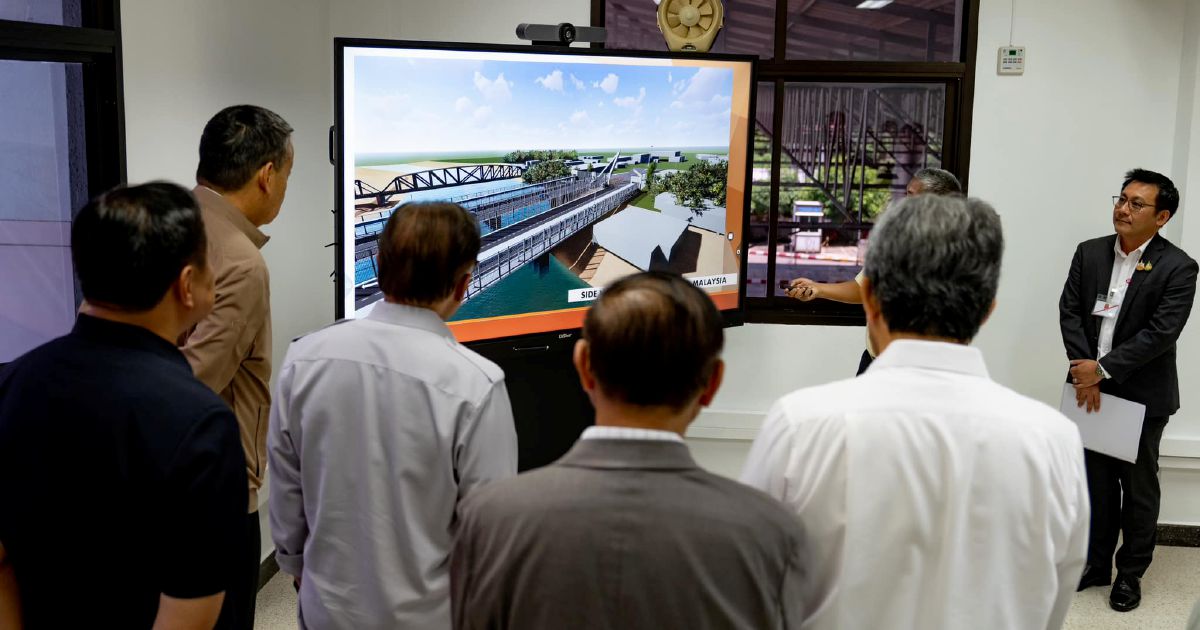KUALA LUMPUR: The construction of the Rantau Panjang-Sungai Golok second bridge will not only improve connectivity between Thailand and Malaysia but also boost the economic and tourism activities of states in the East Coast Economic Region, economists said.
They cited reports that Thailand exported US$5.04 billion (RM22.67 million) worth of products to Malaysia and imported US$5.74 billion (RM25.82 million) worth of products from Malaysia during the first five months of this year.
Putra Business School lecturer Assoc Prof Dr Ahmed Razman Abd Latiff said that improved Malaysia-Thailand connectivity will enhance goods trade and movement, contributing to increased business activities in border districts along the border.
“Increased infrastructure facilities will provide more convenience and reduce costs for businesses operating in and around the state.
“For example, goods traded in Southern Thailand, particularly food items, are generally cheaper compared to the same items purchased locally. As a result, these goods will become more accessible and affordable here.
“Malaysia expects to see gradual improvements as the second bridge and other infrastructure are completed.
“We also anticipate shorter commuting times for goods traveling from Kuantan Port in Pahang to Kelantan, Perlis, and eventually Thailand, thanks to the East Cost Rail Link project construction,” he said.
“Additionally, Kelantan and Southern Thailand have long shared cultural and traditional similarities, which will likely attract more visitors and foster greater community exchanges,” Razman added.
Kelantan Tourism, Arts and Culture director Mohd Aidil Afizie Daud concurred with Razman that the construction of the second bridge will boost the tourism industry, subsequently generating more income for the state.
“The increased movement of people between Malaysia and Thailand will not only foster closer cultural exchanges but is also poised to open numerous business opportunities.
“Moreover the existing tourist destinations will also benefit from increased visitor numbers, while new tourism hubs are expected to emerge, driving economic growth in these regions,” he said.
He added that the meeting and visit by Prime Minister Datuk Seri Anwar Ibrahim and his Thai counterpart, Srettha Thavisin, serve as an “indirect” acknowledgment of the safety and security level at the Malaysia-Thailand border.
“Since both Prime Ministers met at the Kelantan-Narathiwat border, it gives visitors from both countries a sense of assurance that there is a shared commitment by both nations to not only ensure the safety of the land borders but also to celebrate cultural, artistic, culinary, historical, and ancestral heritages,” he said.
UniKL Business School economic analyst Assoc Prof Aimi Zulhazmi Abdul Rashid said the meeting highlights the importance of close border trade between the two countries and the need to align with broader regional trade dynamics, particularly in logistics and transport.
“This will also ensure that Malaysia remains relevant when Thailand completes the highly anticipated Kra Canal,” he said, adding that the canal is expected to be completed by 2030.
He noted that Malaysia, located strategically in the region, has many advantages and should not fall behind in improving its logistics infrastructure.
“Malaysia must leverage its strategic location and ensure that the ECER, expected to be completed in the next few years, is optimized.
“This project will link the East Coast to the West Coast and boost economic activities, even during construction.
“The compounded economic impact of this mega project is significant and must be maximized to ensure a quick return on investment,” Aimi said.
© New Straits Times Press (M) Bhd

